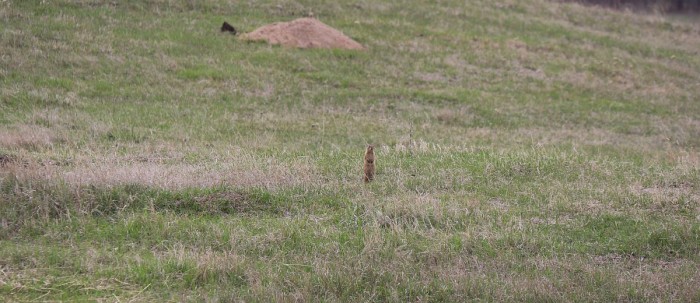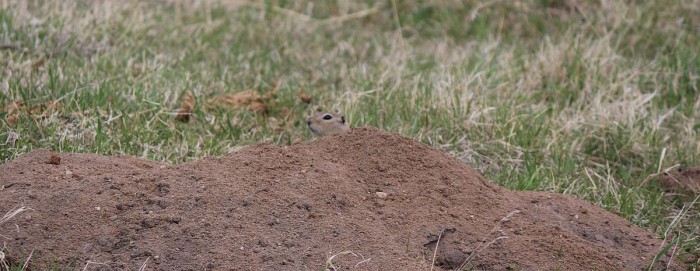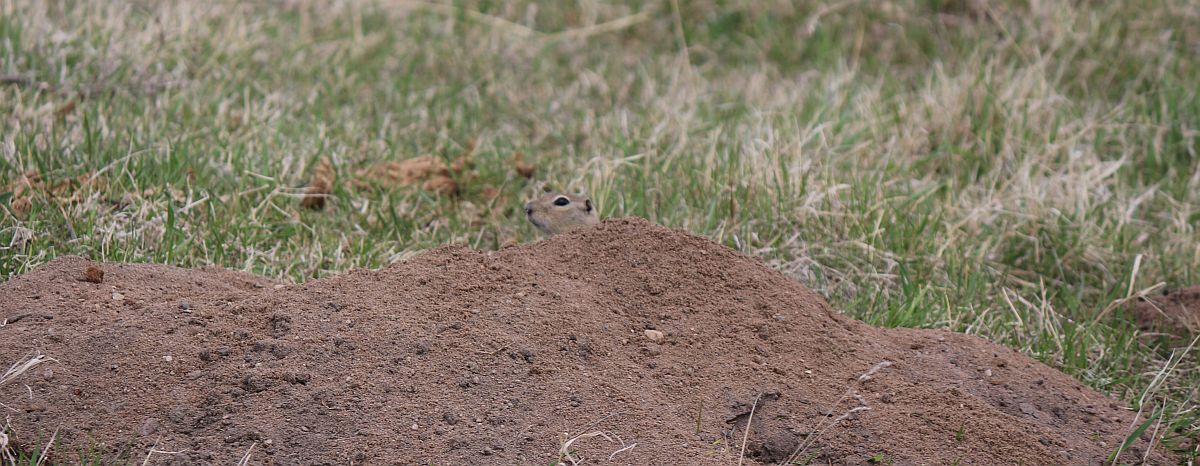This post is about shooting gophers. If you’re not into that, I’d recommend another post.
Way before I was “into” guns as a hobby, I was definitely into shooting gophers. For a young boy with a cracked bolt action .22 that got ran over by a tractor and a pocket full of 22 shells, it was a great way to pass a sunny hot summer day. Technically Richardson’s ground squirrels, gophers in these parts are a blast if you can get a land owner’s permission to hunt them on their property. Their holes are a tripping hazard for livestock, and they usually occupy grazing pastures, so you’re usually shooting gophers in somewhat near vicinity to cattle or horses. For me, that means watching the distance and shots so that potential ground deflections aren’t in line with livestock. Your gopher eradication service won’t look great if a heifer takes a bullet.
Anyhoo, I hit the field with my Marlin 795 with a cheapo 3-9×40 scope, and I was accompanied by a couple of hunting buddies: one with a new Browning T-bolt with Vortex 1-4 scope and the other with a Volquartsen 10/22 and a 2-7 optic. We had a blast taking both close and long shots and hours melted away until we noticed wives were texting some pretty irate messages at us to get home. When you’re running 3 guns on a field, it gets competitive and starts to come down to spotting, getting steady for a shot, and adjusting and taking fast follow up shots.
Spotting Gophers

I know lots of people who can make great shots, but what really separates avid gopher hunters is their uncanny ability to spot a head poking out of a hole, a shadow in the grass, or discern a body from lumps of horse manure. Even though sunglasses are easier on the eyes, I find that I really need unfiltered color to spot the tan color quickly. I opt for a baseball cap instead to keep the sun out of my eyes.
Here, a scope with a bit more zoom will help. While you can spot movement very quickly without any optics, it can be hard to discern slow movement or to see whether that head just popped down or is still up. I had a decided advantage with my crappy scope set at 9x when observing on longer shots.
Another aspect to spotting gophers is spotting heads in holes. Any dummy can look in a field and see a gopher doing the classic standing pose but what you’re missing, especially in a field that gets shot a lot, are the gophers that are much closer and just have their heads out.

Range and Wind
Essential for a 1 shot kill, shooting gophers is great practice for getting range and wind drift correct. Some guys will use a 223 or 22-250 bolt rifle on a shooting table with range finders and the whole works. Personally, I walk the field with a simple .22. They’re cheap, quiet, and you’re more likely not to disturb landowners firing a 22, but they get thrown around by the wind more and they drop a heck of a lot more. A scope with drop hash marks may help, but personally I just aim a bit higher. I find it’s important to have a quick follow up after observing where your first round hits with:
Quick Follow up Shots
Some gophers just flat out won’t move after your first shot. That’s where a quick correction and second shot will do the trick and it’s why, if you’re competing with buddies, a semi-automatic .22 is the only way to fly. There are also situations where there are multiple gophers out, and fast shooting will maximize the number you take out before they scramble for their holes. A good bolt action 22 may shoot smaller groups, but from standing, kneeling or hasty prone positions, the accuracy advantage is less important because both a semi and bolt 22 may outshoot you.
Out in the field
I ran through about 300 rounds of Federal and Remington bulk 22 ammo before switching to Winchester 333 bulk, which was a huge mistake. That stuff does not cycle reliably in semi-auto’s. Both my 795 and my buddy’s Volquartsen would have constant FTE’s with that ammo, which is a bit surprising, because it’s standard velocity 22LR ammo. At the end of the day, my fingertips were a bit sore from reloading the 795’s magazine, whereas the T-bolt double helix magazine was nicer on the fingers. I am now thinking about picking up a 25 round stick magazine or at least another 10 rounder so that I don’t have to reload so often. Combined, we eradicated about 100 gophers from the farmer’s field in a few short hours, and I can’t wait to do it again.
